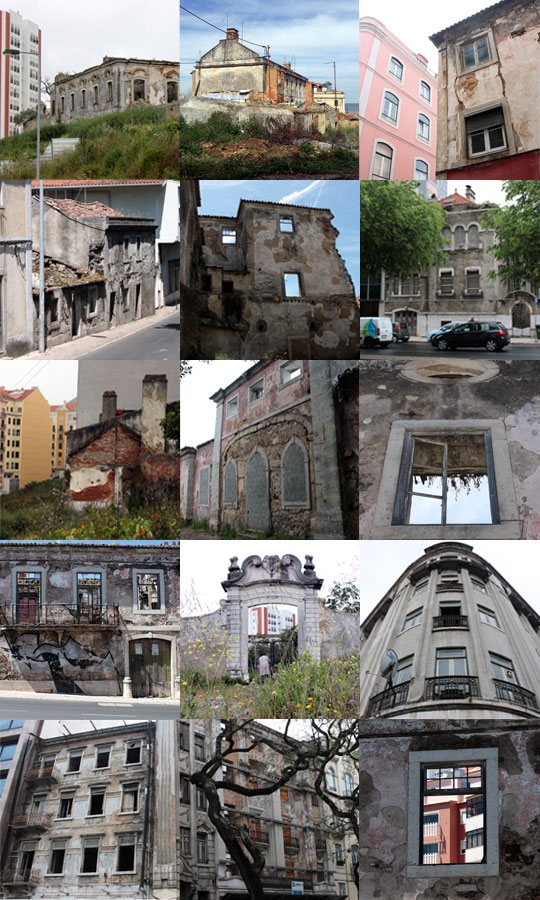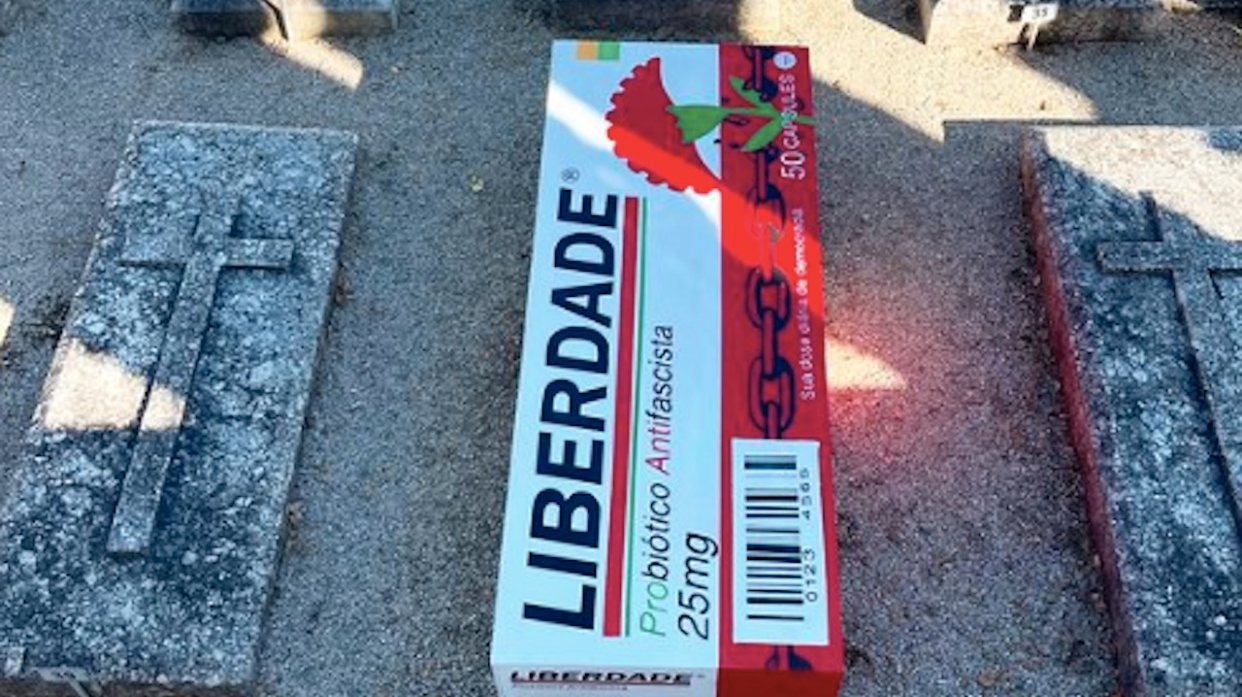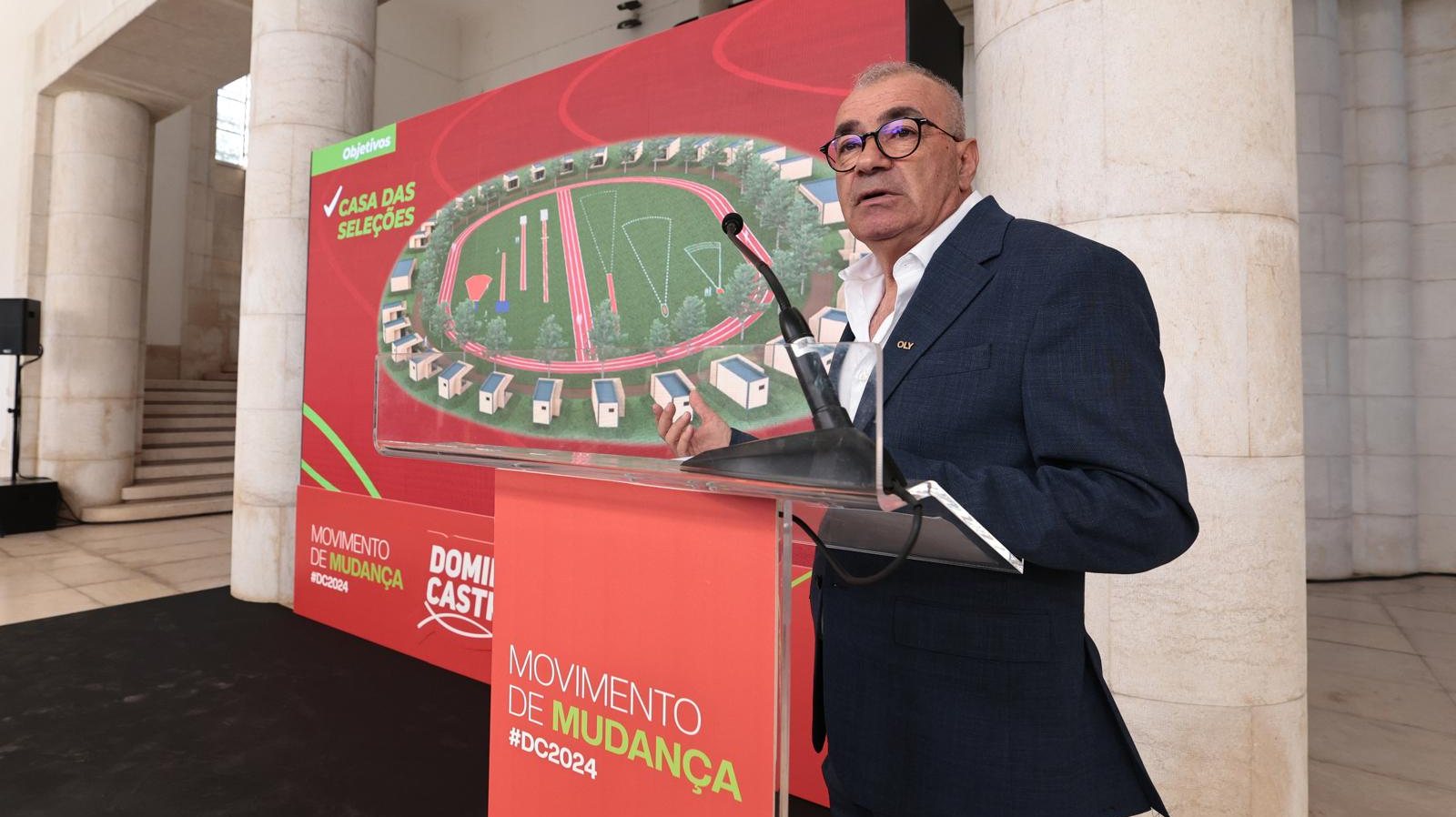Não é possível encontrar defensores mais ferozes da beleza da sua terra do que os portugueses. E, já agora, podem-me incluir no grupo. A diversidade incrível de paisagens, a possibilidade de passar da montanha ao mar, do deserto à floresta, tudo num par de horas de automóvel, ainda continua a emocionar-me, mesmo depois de todo este tempo.
É porém muito menos excitante ver as coisas diversas e estranhas que foram construídas nessas paisagens. Embora cada qual tenha o seu gosto, nunca entenderei como qualquer pessoa de juízo nos anos 60, 70 e 80 achou que aqueles prédios e moradias iam envelhecer bem, estética ou fisicamente. Nunca entenderei como uma coisa que parece um bunker nuclear pode ficar bem ao lado de um solar do século XVII. Mas admito que isso faz parte da natureza orgânica das urbanizações ao longo dos séculos. Talvez, um dia, os nossos descendentes achem bonita e interessante a arquitectura da segunda metade do século XX, quando ela estiver já toda escura de caruncho, depois de duzentos anos a afogar os centros históricos das cidades (sim, também duvido, mas quem sabe?).
Ainda hão-de estar aí, de qualquer maneira, como ruínas, tal como tantos outros edifícios que marcam a paisagem, deixados a apodrecer porque ninguém os quis ou porque ninguém pôde decidir o que fazer com eles, até tarde demais.
Em Portugal, há ruínas por todo o lado, imensas ruínas. Passe por qualquer paisagem, aldeia, vila ou cidade, e vai encontrar uma ruína ou construção destinada a ser ruína, quer prédios grandes, quer solares, quer moradias, quer montes, quer casinhas. Muitas vezes encontram-se entre outras construções contemporâneas ou mais recentes. Não são só habitações. Há fábricas e armazéns e prédios inacabados e/ou abandonados, como vastos esqueletos depois de um bombardeamento nuclear.
Lembre-se, em Lisboa, das ruínas que se encontram no Bairro Alto e em Alfama. Pense nos edifícios abandonados na Baixa, ou na Avenida Fontes Pereira do Melo ou na Avenida da República, aquela grande tragédia de uma avenida que já foi importante e que hoje não parece nada disso. Pense em qualquer subúrbio de Lisboa. Lembre-se de quase todas as vilas e aldeias de Portugal que já atravessou a pé ou num qualquer tipo de veículo. Lembre-se de qualquer estrada entre áreas industriais.
Que grande desperdício! Um desperdício de materiais, no caso das ruínas mais novas. Um desperdício de beleza, no caso das mais velhas. Um desperdício de espaço, no caso de todas elas.
Em vez de utilizarem esses espaços, as cidades espalharam-se em subúrbios, a maior parte feitos de moradias exageradas e de mau gosto, ou de prédios sem charme nem personalidade, e que nada têm a ver com a paisagem.
Às ruínas nem sequer é dado o direito de morrerem uma morte digna e pitoresca. Anos, décadas, depois de uma casa se desintegrar, alguém vem encher as janelas com tijolos. Porquê? Estão fartos de encontrar garrafas vazias e preservativos e maços de cigarros dentro das suas amadas ruínas? Querem impedir a entradas dos pombos? Acham que um dia vão poder voltar e salvar as ruínas? Porque não vão. Já é tarde demais.
E, meu Deus, tudo tem um aspecto horrível, feio e triste. É como se Portugal quisesse manter em todos os cantos lembranças triste de tudo que foi e já não é. O que acham que isto tudo diz às pessoas? E não, não estou a falar dos turistas. Eles não precisam de viver ao lado das ruínas. Estou a referir-me ao estado de espírito das pessoas que cá vivem, obrigadas a confrontar-se diariamente com a lembrança de planos que não se concretizaram, de famílias que desapareceram ou se dividiram, de negócios que falharam, de pessoas que morreram ou se foram embora –porque é isso que as ruínas significam.
Há um ar de melancolia que envolve uma ruína, o sentido de algo perdido. E há a fealdade dos inevitáveis graffiti que cobrem as paredes. Do lixo que se vai acumular lá dentro e cá fora. Do bolor preto no lado dos edifícios onde o sol não bate. Das ervas que nunca vão crescer suficientemente para consumir a construção toda.
Verdadeiramente, isto tudo é um mistério para mim. Como é possível que se tenha tornado um hábito deixar tantos edifícios em ruína, especialmente num país onde o desperdício é um pecado? Porque é que continua a acontecer? Porque é que não se faz nada?
Já é tarde demais, de certeza, para resgatar a maior parte das ruínas. É preciso um milionário para salvar um edifício e restituí-lo à glória anterior. O que fazer então com as ruínas? Demoli-las a todas? Fechá-las para, pelo menos, impedir que se tornem caixotes de lixo? Expropriar com indemnização qualquer edifício abandonado e doá-lo a quem se proponha fazer a sua reconstrução? Há muitos seres humanos que precisam de um lugar barato e decente para viver.
Ruínas e quase-ruínas nas cidades, principalmente em Lisboa, podem e são aproveitadas para criar uma quantidade exagerada de hotéis e apartamentos sobrevalorizados. É, pelo menos, uma coisa que se pode fazer. Mas o que vai acontecer às casinhas, montes e solares que não se podem tornar negócios lucrativos? Suponho que Portugal manterá a nostalgia e a melancolia das suas ruínas durante muito tempo.
(texto traduzido do original inglês pela autora)
Portugal in Ruins
You will never meet more ferocious defenders of the beauty of their nation than the Portuguese. You can, of course, include me in those ranks. The incredible diversity of landscape, from mountain to sea, from desert to forest, all in the space of a couple of hours’ driving, still thrills me after all these years.
It’s less thrilling to see what odd things are built on those landscapes, but each to their own. I will never understand how anyone in their right minds in the 60s, 70s and 80s thought that those apartment blocks and houses would age well, either aesthetically or physically. I will never understand how something that looks like a not-fit-for-purpose nuclear bunker is ever going to look good juxtaposed with a 17th century manor house. I suppose, however, that that’s the organic nature of villages, towns and cities through the centuries. Maybe one day our descendants will view late 20th Century architecture blackened by mildew as pretty and interesting after a couple of hundred years of these ugly suburbs drowning out ancient town centres. (yes, I doubt it, too).
They’ll still be there anyway, left in ruins, like so many other buildings that dot the landscape, left to rot because no one wants them anymore, or because no one can decide what to do with them until it’s too late.
There are ruins everywhere, so very many of them. Walk through any landscape, any village, any town, any city and there will be a ruin or a building heading for irreparable ruination, whether they are grand buildings, manor houses, farmhouses, tiny cottages, often sandwiched between other newer and older buildings. It’s not just houses. Factories and warehouses and apartment blocks litter the place, either half finished or abandoned, sitting along the roadsides like vast skeletons after a nuclear bomb has gone off.
Think of the ruins you find in Bairro Alto and Alfama. Think of the abandoned buildings in the Baixa, or in Avenida Fontes Pereira do Melo and Avenida da República and the ghastly mess that it is. Think of any of Lisbon’s suburbs. Think of almost any town or village you have ever walked or driven through in Portugal. Think of any main road between industrial towns.
What a waste. A waste of materials in the case of the newer ruins. A waste of beauty, in the case of the older ruins. A waste of precious space in the case of all of them.
Instead of being able to use that space, towns sprawl out even further, many of them weird, nasty, overblown houses and characterless apartments that have no place in their surroundings.
The ruins aren’t even allowed to die in a picturesque manner. Years, decades, after a house has disintegrated, someone comes and bricks up the windows. Why? Are they sick of finding empty bottles and condoms and cigarette packets inside their cherished building? Are they hoping that it will keep the pigeons out? Do they think they will one day be able to go back and salvage the ruins? Because they won’t. It’s already too late.
And god, it looks awful, and ugly, and sad. It’s as if Portugal just wants to keep nostalgia around every corner, sad reminders of things past. What do you think it looks like? I don’t mean how it looks to tourists. They don’t have to live next to the ruins. I’m wondering what it does for the spirit of the many, many people who do live next to constant reminders of things that haven’t worked out, stories of families falling to pieces, businesses that have failed, people who have moved away.
There is an air of permanent melancholy that hangs around a ruin, a sense of something lost. Then there’s the ugliness of the eventual graffiti that will cover it. The junk that accumulates in and around it. The black mildew in the corners that never catch the sun. The overgrown weeds that will never be big enough to entirely consume any building.
It truly mystifies me. How was it allowed to happen, especially in a country where wastefulness is a sin? Why does it carry on? Why is nothing done?
It’s too late, of course, for most of the ruins, and they will continue to haunt us all. It’s too expensive for anyone but a millionaire to salvage an old building to its former glory, so most of them are lost for good. But what to do with them? Knock them all down? Consecrate them, to prevent them, at the very least, from being used as rubbish dumps? Instigate compulsory purchase for any building that is allowed to fall into disrepair and donate it to the nation, to reconstruct and give to human beings who need affordable and decent homes?
Ruins and near-ruins in the cities, principally, Lisbon, may be taken up and turned into an overabundance of hotels and overpriced apartments. That’s something at least. But what of the tiny houses crushed between two others and the farmhouses and manor houses that can’t be easily turned into lucrative businesses. I suppose Portugal will just hang on to nostalgia and melancholy and ruination forever.














